Submitted:
26 August 2024
Posted:
27 August 2024
You are already at the latest version
Abstract
Keywords:
1. Introduction
2. Research Methodology and Data Sources
2.1. Research Framework
| Type | Influencing Factor | Weighted Indicator | Impact on Network Resilience |
|---|---|---|---|
| Structural Resilience | Transmissibility | Weighted Global Efficiency |
Measures the speed and capacity of information transmission or material flow within the global wood forest product trade network, considering trade intensity weighting. Higher efficiency indicates smoother transmission and stronger resilience. |
| Clustering | Weighted Average Clustering Coefficient |
Measures the modular characteristics of the global wood forest product trade network, considering trade volume weighting. Higher coefficients indicate tighter local clustering, better network connectivity and transmission efficiency, and stronger resilience. | |
| Hierarchy | Weighted Degree Distribution |
Reflects the probability distribution of node-weighted degrees considering trade volumes. Moderate hierarchy and flat structures contribute to balance between robustness and vulnerability, enhancing network resilience. | |
| Assortativity | Weighted Assortativity Coefficient |
Reflects the tendency of countries (regions) to connect with partners of similar total trade volumes. Assortative networks strengthen hub connections, providing stability and rapid recovery, while disassortative networks facilitate information exchange and resource sharing but may lead to over-reliance on hubs, affecting resilience and stability. | |
| Nodal Resilience | Node Strength | Weighted Out-degree & In-degree |
High weighted degrees indicate higher anti-interference ability but may also make nodes “single points of failure.” |
| Transit Capacity | Weighted Betweenness Centrality | High values indicate nodes occupying central positions, controlling critical trade flows, and acting as bridges. High centrality reflects both closeness and potential influence in risk transmission. | |
| Diffusion Capacity | Weighted Closeness Centrality |
Reflects a node’s centrality based on trade intensity. High closeness enables nodes to rapidly acquire and disseminate information, mitigating or blocking further risk transmission. |
2.2. Research Methodology
2.2.1. Construction of the Global Wood Forest Products Trade Network
2.2.2. Related Indicators of Network Structural Resilience
2.2.3. Indicators Related to Node Resilience in Networks
2.2.4. Data Sources and Data Processing
3. Results Analysis
3.1. Overall Characteristics of the Global Trade Network for Wood Forest Products
3.1.1. Temporal Changes in Trade Scale
3.1.2. Network Topology
3.2. Evolution of Network Structural Resilience
3.2.1. Network Transitivity and Clustering
3.2.2. Network Hierarchy
3.2.3. Network Matching
3.3. Evolution of Network Node Resilience
3.3.1. Evolution Trend of Upstream Core Node Resilience
3.3.2. Evolution Trend of Midstream Core Node Resilience
3.3.3. Evolution Trend of Downstream Core Node Resilience
3.3.4. Evolution Trend of Recycling Core Node Resilience
4. Conclusion and Discussion
4.1. Conclusion
4.2. Discussion
Author Contributions
Funding
References
- Cao, X.P.; Yang, S.; Huang, X.M.; Tong, J.X. Dynamic decomposition of factors influencing the export growth of China’s wood forest products. Sustainability 2018, 10, 2780. [Google Scholar] [CrossRef]
- Long, T.; Pan, H.X.; Dong, C.; Qin, T.; Ma, P. Exploring the competitive evolution of global wood forest product trade based on complex network analysis. Physica A: Statistical Mechanics and its Applications 2019, 525, 1224–1232. [Google Scholar] [CrossRef]
- Köhl, M.; Lasco, R.; Cifuentes, M.; Örjan Jonsson. ; Korhonen, K.T.; Mundhenk, P.; de Jesus Navar, J.; Stinson, G. Changes in forest production, biomass and carbon: Results from the 2015 UN FAO Global Forest Resource Assessment. Forest Ecology and Management 2015, 352, 21–34. [Google Scholar] [CrossRef]
- FAO. The State of the World’s Forests 2024. Technical report, Food and Agriculture Organization of the United Nations, 2024.
- Liu, L.; Chen, Y.; Yu, J.; Sun, Y. Study on the resilience of global trade network of wood forest products. IssuesofForestryEconomics 2024, 44, 218–224. [Google Scholar] [CrossRef]
- Lovric´, M.; Re, R.D.; Vidale, E.; Pettenella, D.; Mavsar, R. Social network analysis as a tool for the analysis of international trade of wood and non-wood forest products. Forest Policy and Economics 2018, 86, 45–66. [Google Scholar] [CrossRef]
- Zhou, Y.Y.; Hong, Y.P.; Cheng, B.D.; Xiong, L.C. The Spatial Correlation and Driving Mechanism of Wood-Based Products Trade Network in RCEP Countries. Sustainability 2021, 13, 10063–10063. [Google Scholar] [CrossRef]
- Gao, L.; Pei, T.W.; Yu, T. Trade Creation or Diversion?—Evidence from China’s Forest Wood Product Trade. Forests 2024, 15, 1276–1276. [Google Scholar] [CrossRef]
- Tian, G.; Jiang, Q.Q. Social Network Analysis on International Roundwood Trade Pattern in 2005—2014. World Forestry esearch 2016, 29, 87–91. [Google Scholar] [CrossRef]
- Liu, L.; Chen, Y.; Yu, J.; Cheng, R. Analysis of the Trade Network of Global Wood Forest Products and its Evolution from 1995 to 2020. Forest Products Journal 2024, 74, 121–129. [Google Scholar] [CrossRef]
- Pizzol, M.; Scotti, M. Identifying marginal supplying countries of wood products via trade network analysis. The International Journal of Life Cycle Assessment 2017, 22, 1146–1158. [Google Scholar] [CrossRef]
- Wang, R.; Wu, H.M.; Zhe, R.; Zhang, Y.A. Complex network analysis of global forest products trade pattern. Canadian Journal of Forest Research 2022, 53, 271–283. [Google Scholar] [CrossRef]
- Hou, F.M.; Xiao, J.X.; Zhang, F.J.; Xiao, H.; Chen, Y. The Impact of Global Trade Networks on the Division of Labor in Value Chains——Based on Wood Forest Products Perspective. Forestry Economics 2022, 44, 50–64. [Google Scholar] [CrossRef]
- Wang, F.; Tian, M.H.; Yin, R S. e.a. Change of global woody forest products trading network and relationship between large supply and demand countries. Resources Science 2021, 43, 1008–1024. [Google Scholar] [CrossRef]
- Holling, C.S.; et al. Resilience and stability of ecological systems. Annual Review of Ecology and Systematics 1973. [Google Scholar] [CrossRef]
- Li, L.G.; Zhang, P.Y.; Tan, J.T.; Guan, H.M. Review on the Evolution of Resilience Concept and Research Progress on Regional Economic Resilience. Human Geography 2019, 34, 1–7+151. [Google Scholar] [CrossRef]
- Liu, W.; Song, Z.Y. Review of studies on the resilience of urban critical infrastructure networks. Reliability Engineering and System Safety 2020, 193, 106617–106617. [Google Scholar] [CrossRef]
- Department of Transportation Engineering, I.U.o.T.; Department of Transportation Engineering, I.U.o.T.; Complex.; Sustainable Urban Networks (CSUN) Laboratory, U.o.I.a.C.; of Civil, D.; Materials Engineering, U.o.I.a.C.; Department of Transportation Engineering, I.U.o.T. Correction to: The role of travel demand and network centrality on the connectivity and resilience of an urban street system. Transportation 2019, 46, 1969–1969.
- Ali, K.; Elena, R.; D, F.B. Network structure impacts global commodity trade growth and resilience. PloS one 2017, 12, e0171184. [Google Scholar]
- Ahmed, M.; Kannan, G.; Nasiru, Z.; Jacob, P.; Zainul, A.A. Multi-tier supply chain network design: A key towards sustainability and resilience. Computers Industrial Engineering 2023, 182. [Google Scholar]
- Kharrazi, A.; Akiyama, T.; Yu, Y.; Li, J. Evaluating the evolution of the Heihe River basin using the ecological network analysis: Efficiency, resilience, and implications for water resource management policy. Science of the Total Environment 2016, 572, 688–696. 22. Wei, Y.; Xiu, C.L. Study on the concept and analytical framework of city network resilience. Progress in Geography 2020, 39, 488–502. [CrossRef]
- Jiao, B. Measuring the Resilience of International Energy Trade Networks From an Energy Security Perspective. Journal of Industrial Technological Economics 2024, 43, 131–140. [Google Scholar] [CrossRef]
- Sharifi, A. Resilient urban forms: A review of literature on streets and street networks. Building and Environment 2019, 147, 171–187. [Google Scholar] [CrossRef]
- Caschili, S.; Medda, F.R.; Wilson, A. An Interdependent Multi-Layer Model: Resilience of International Networks. Networks and Spatial Economics 2015, 15, 313–335. [Google Scholar] [CrossRef]
- Kharrazi, A.; Yu, Y.; Jacob, A.; Vora, N.; Fath, B.D. Redundancy, Diversity, and Modularity in Network Resilience: Applications for International Trade and Implications for Public Policy. Current Research in Environmental Sustainability 2020, 2, 100006–100006. [Google Scholar] [CrossRef]
- S., S.J.; L., H.H.; Emily, D.S.; Debra, C.; Melissa, C.; Kelly, H.; Buck, J.; Jordyn, K.; Emma, K.; Steve, K.; et al. Alternative Seafood Networks During COVID-19: Implications for Resilience and Sustainability13; Frontiers in Sustainable Food Systems 2021, 5. [Google Scholar]
- Berfin, K.D.; Megan, K. A complex network framework for the efficiency and resilience trade-off in global food trade. Environmental Research Letters 2021, 16. [Google Scholar]
- R, F.K.; T, B.C.; Madhur, A. Dynamics of the Global Wheat Trade Network and Resilience to Shocks. Scientific reports 2017, 7, 7177. [Google Scholar]
- Shahnazi, R.; Sajedianfard, N.; Melatos, M. Import and export resilience of the global oil trade network. Energy Reports 2023, 10, 2017–2035. [Google Scholar] [CrossRef]
- Yuan, X.J.; Ge, C.B.; Liu, Y.P.; Li, N.; Wang, Y. Evolution of Global Crude Oil Trade Network Structure and Resilience. Sustainability 2022, 14, 16059–16059. [Google Scholar] [CrossRef]
- Sun, X.; Wei, Y.; Jin, Y.; Song, W.; Li, X.L. The evolution of structural resilience of global oil and gas resources trade network. Global Networks 2022, 23, 391–411. [Google Scholar] [CrossRef]
- Yu, Y.; Ma, D.P.; Wang, X.M. International trade network resilience for products in the whole industrial chain of iron ore resources. Resources Science 2022, 44, 2006–2021. [Google Scholar] [CrossRef]
- Shen, X.; Guo, H.X.; Cheng, J.H. The resilience of nodes in critical mineral resources supply chain networks under emergent risk:.
- Take nickel products as an example. Resources Science 2022, 44, 85–96. [CrossRef]
- Yu, Y.; Ma, D.P.; Zhu, W.W. Resilience assessment of international cobalt trade network. Resources Policy 2023, 83. [Google Scholar] [CrossRef]
- Chen, Y.R.; Chen, M.P. Evolution of the global phosphorus trade network: A production perspective on resilience. Journal of Cleaner Production 2023, 405. [Google Scholar] [CrossRef]
- Zuo, Z.L.; Cheng, J.H.; Guo, H X. e.a. Resilience evolution and evaluation of the trade network structure in the lithium industry chain. China population, resources and environment 2024, 34, 155–166. [Google Scholar]
- Chen, W.; Wang, X.R.; Long, Y.; Zhao, X.Q.; Liu, Z.G. Resilience Evolution of the Trade Networks in Regions along the Belt and Road. Economic Geography 2024, 44, 22–31. [Google Scholar] [CrossRef]
- Shen, Z.H.; Wang, H.Y.; Hu, Z.H. Supply Chain Resilience:Adapting to Complexity—Based on the perspective of Complex System Thinking. Chinese journal of Management Science 2022, 30, 1–7. [Google Scholar] [CrossRef]
- Xu, R.L. Research on the Influence of TPP on Chinese Forest Products Trade. Master’s thesis, Beijing Forestry University, 2017. [Google Scholar]
- Li, Y.X. Research on the Evolution and Influencing Factors of RCEP Members’Wood Products Trade Network and the Influence of China’s Stat. Master’s thesis, Beijing Forestry University, 2022. [Google Scholar]
- Chen, Y.R.; Chen, M.P. Evolution of global phosphorus products trade pattern and China’s phosphorus import and export security. Resources Science 2024, 46, 85–99. [Google Scholar] [CrossRef]
- Wang, X.F.; Li, X.; Chen, G.R. Network Science: An Introduction; Higher Education Press: Beijing, 2012. [Google Scholar]
- Joan, C.; Raphael, S.; Jerome, V. Lock-in or lock-out? How structural properties of knowledge networks affect regional resilience. Journal of Economic Geography 2013, 14, 199–219. [Google Scholar]
- Newman, M.E.J. Assortative Mixing in Networks. Phys. Rev. Lett. 2002, 89, 208701. [Google Scholar] [CrossRef]
- U. , P.; M., S. Assortative mixing in weighted directed networks. Physica A: Statistical Mechanics and its Applications 2022, 604. [Google Scholar]
- Newman, M.E.J. The Structure and Function of Complex Networks. SIAM Review 2003, 45, 167–256. [Google Scholar] [CrossRef]
- Zhou, M.J.; Wang, F.Y.; Shao, L.G. Resilience evaluation of the rare earth supply chain in countries (regions) outside China: A case study of NdFeB permanent magnet. Resources Science 2023, 45, 1746–1760. [Google Scholar] [CrossRef]
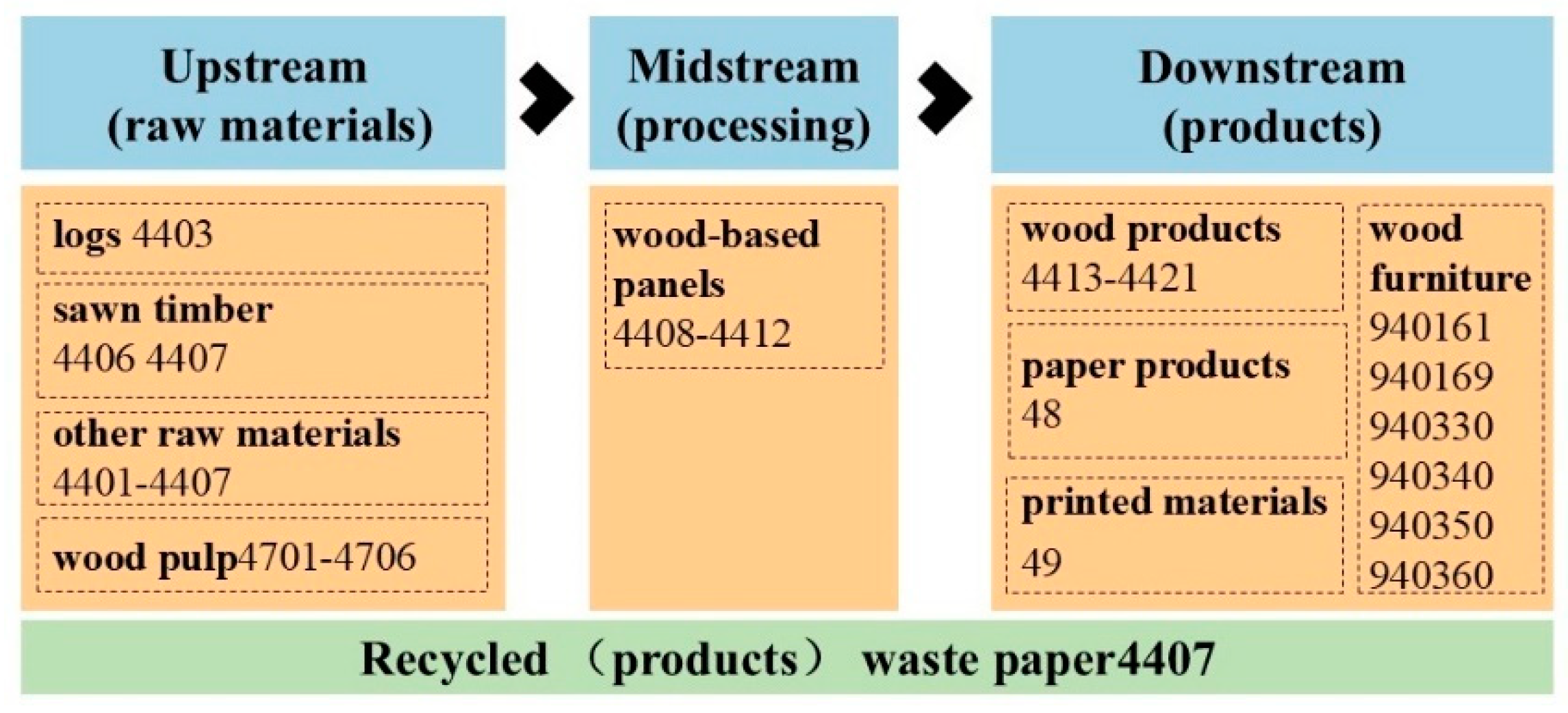
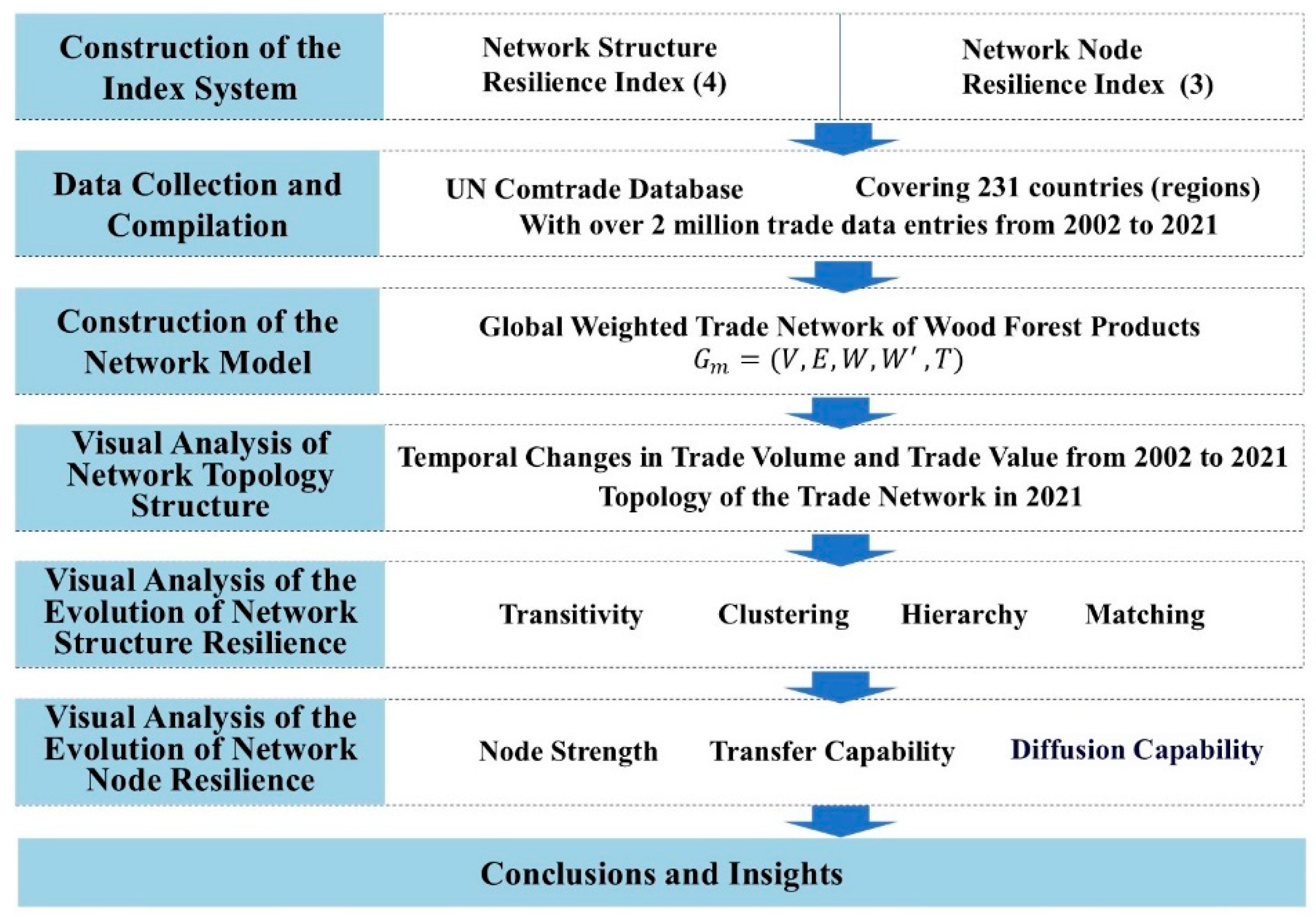
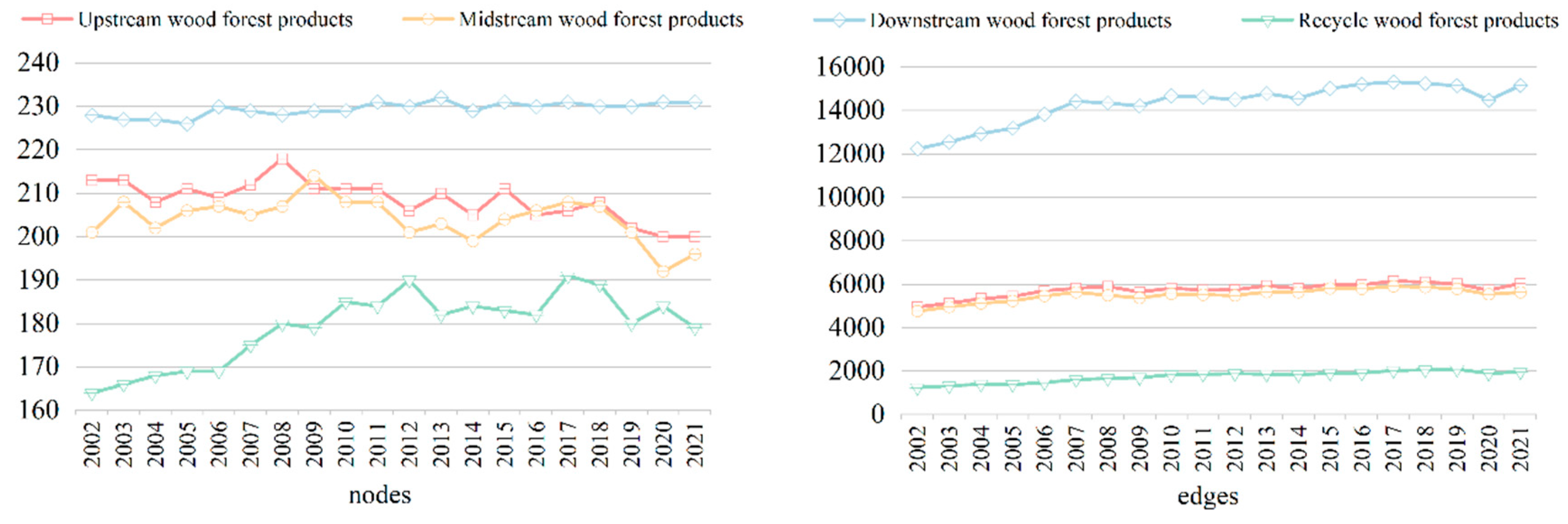

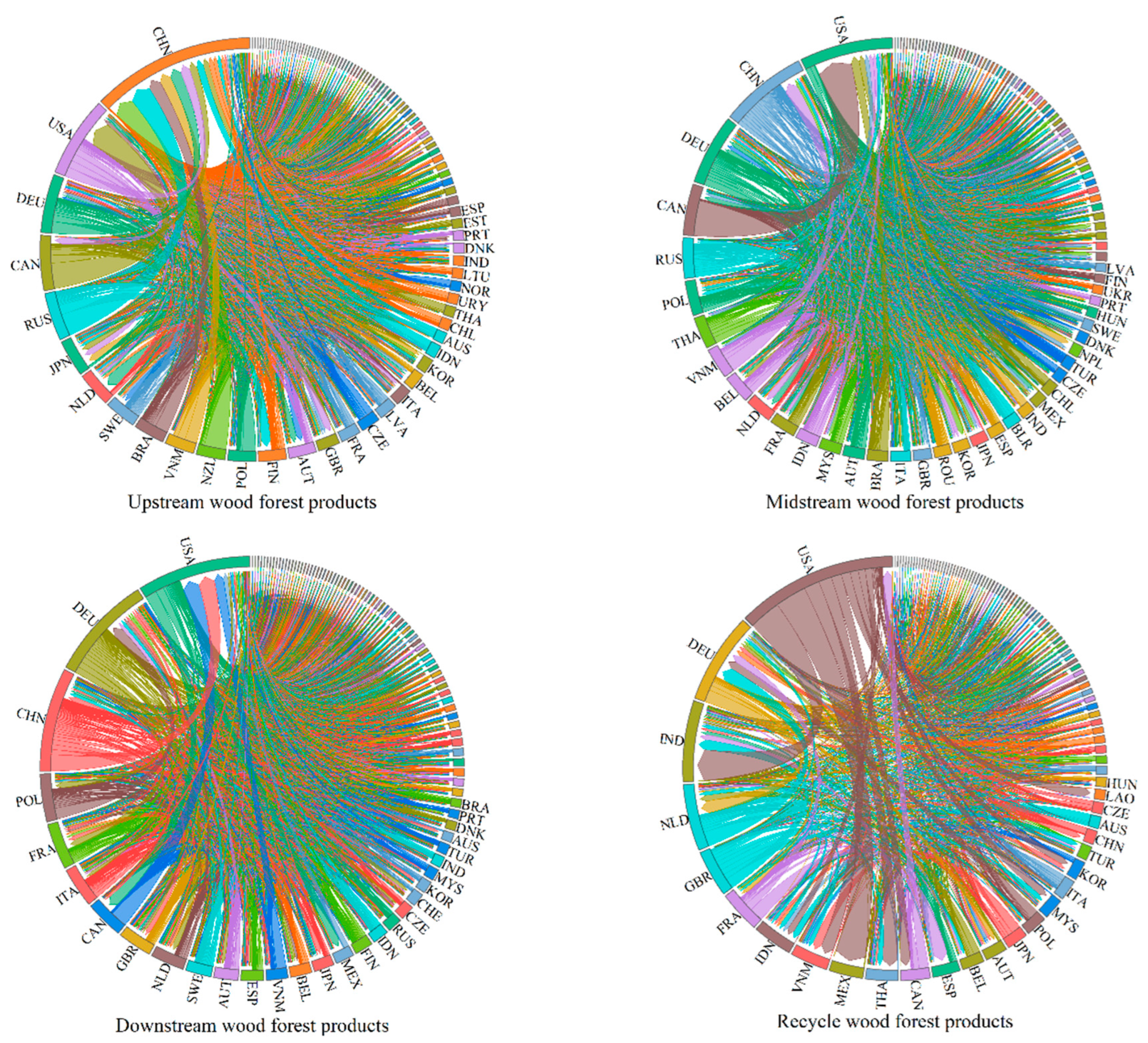
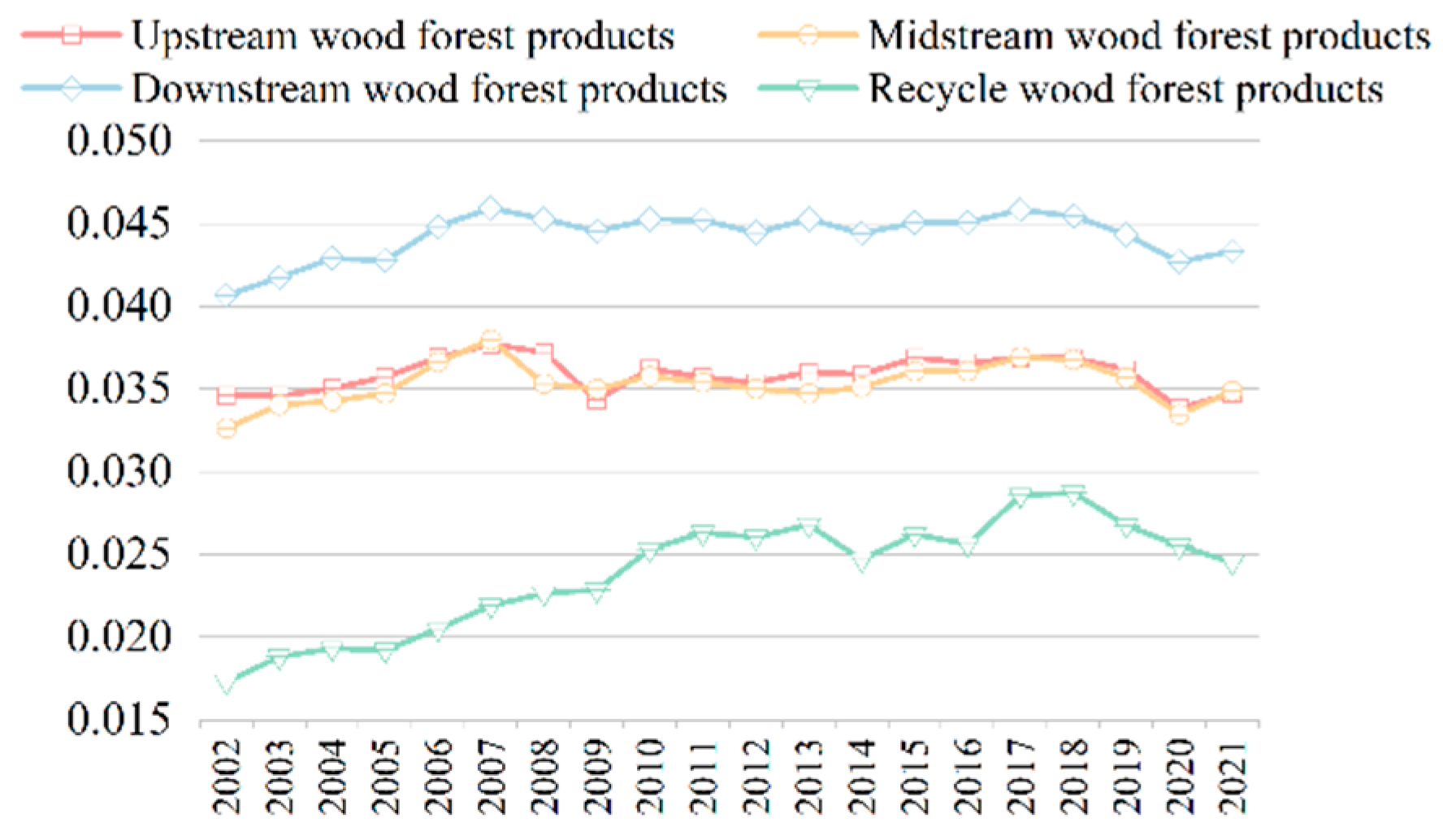
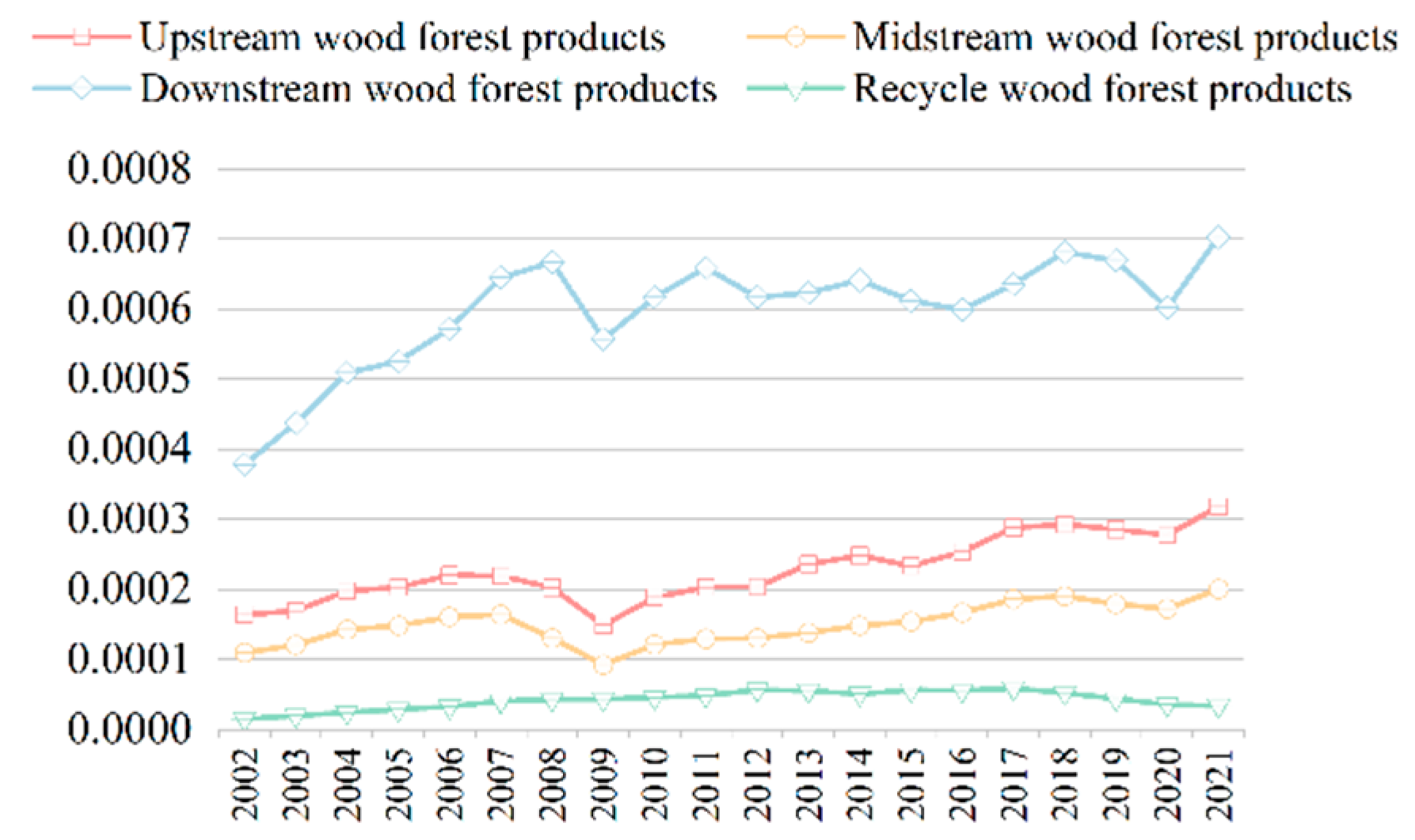
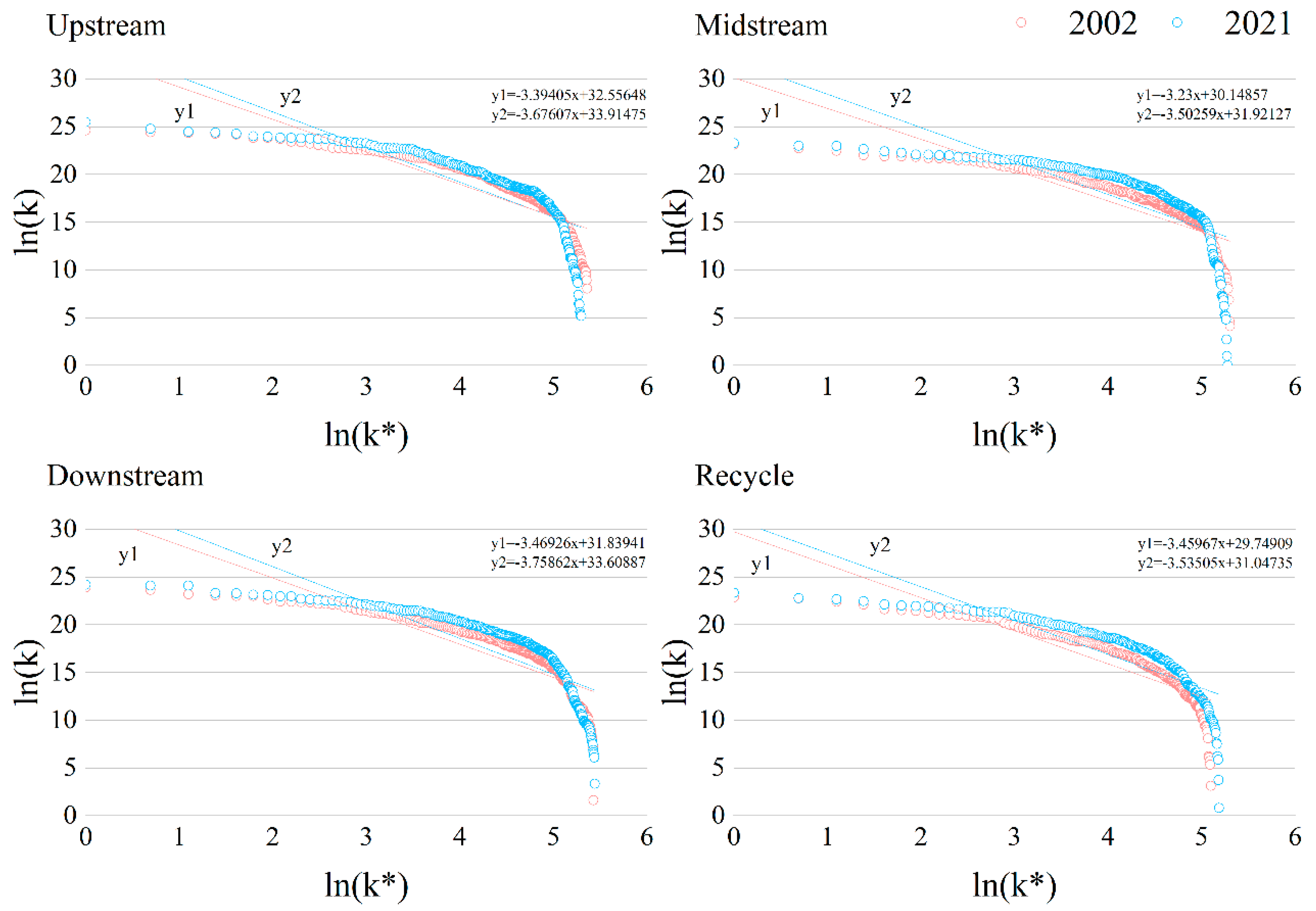
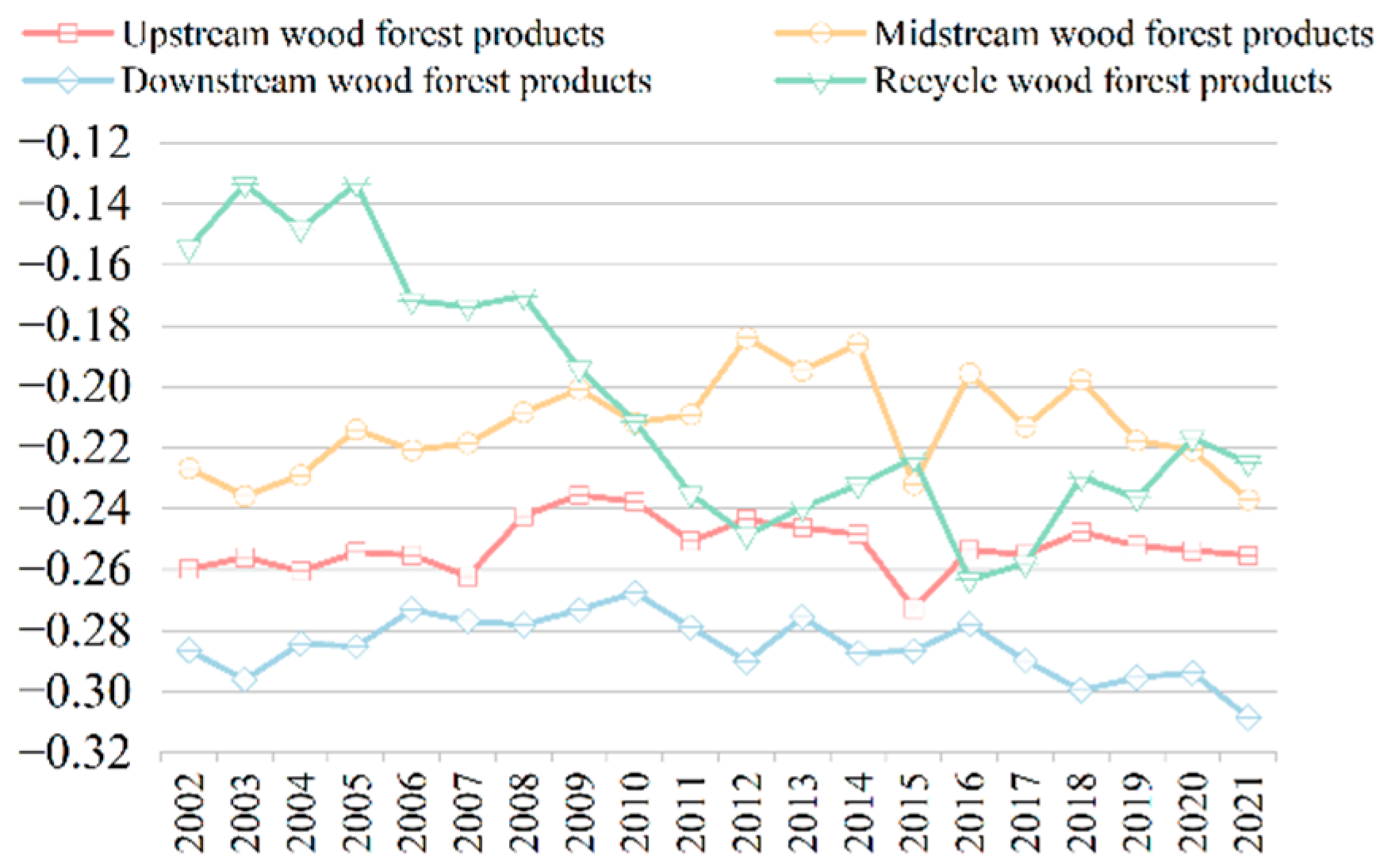
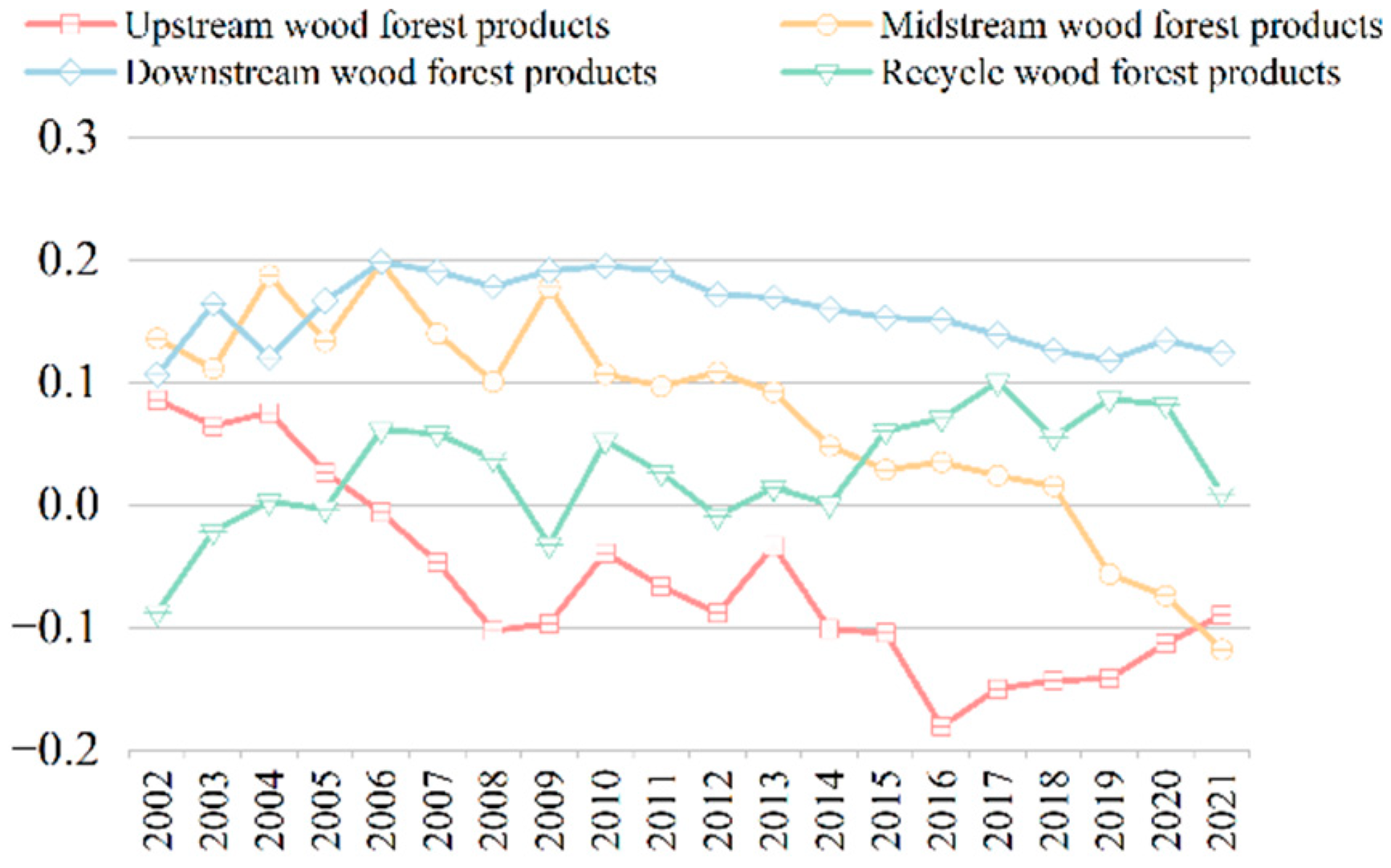
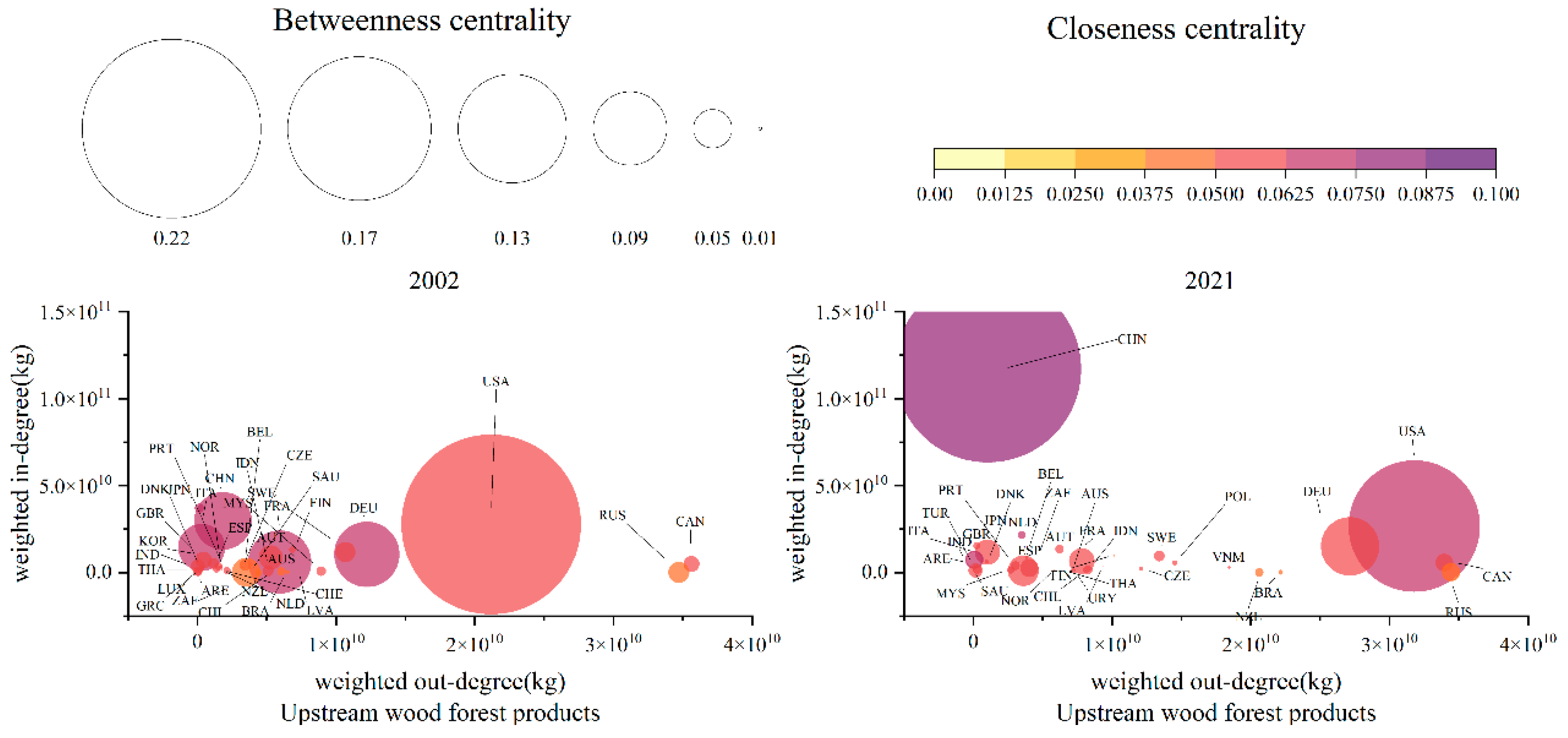
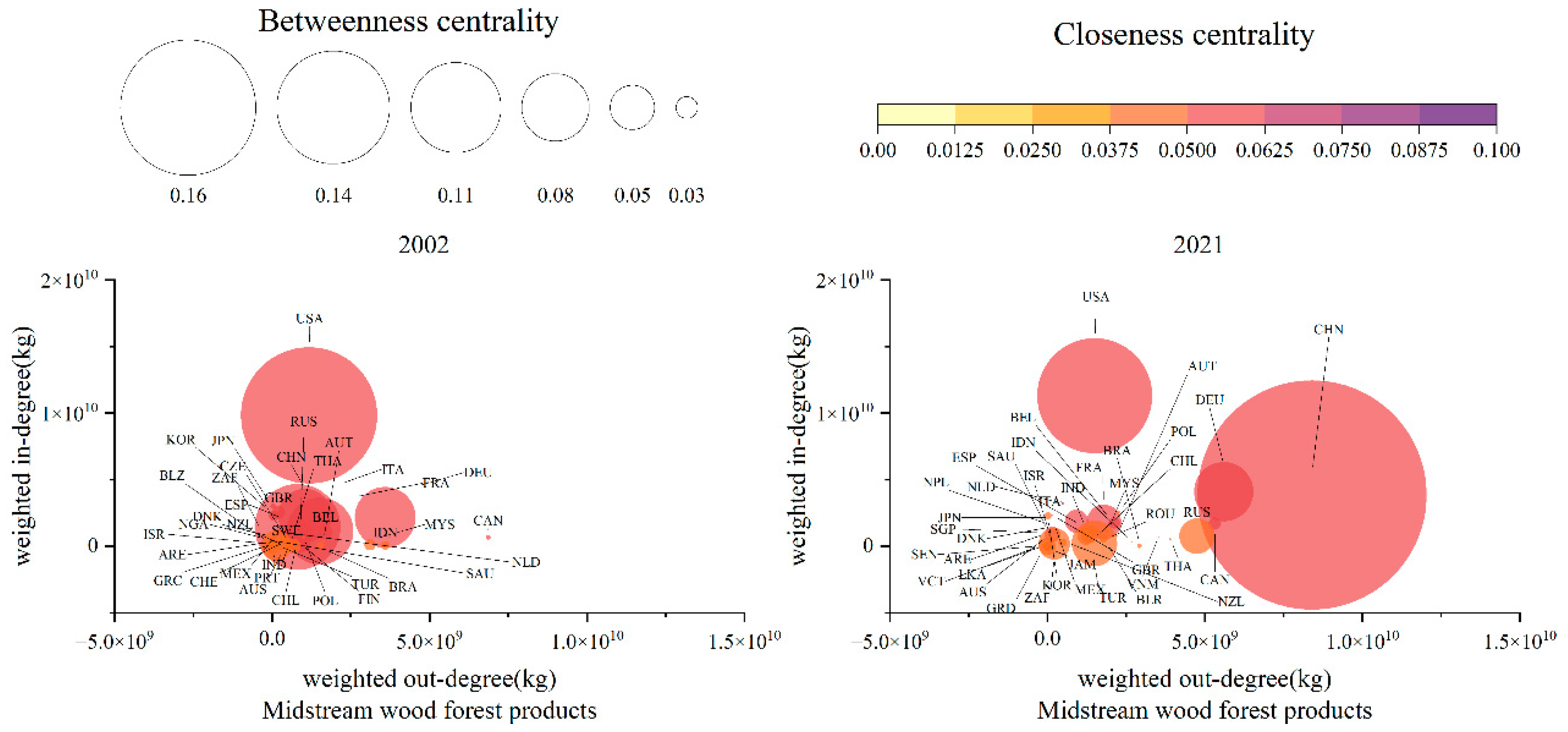
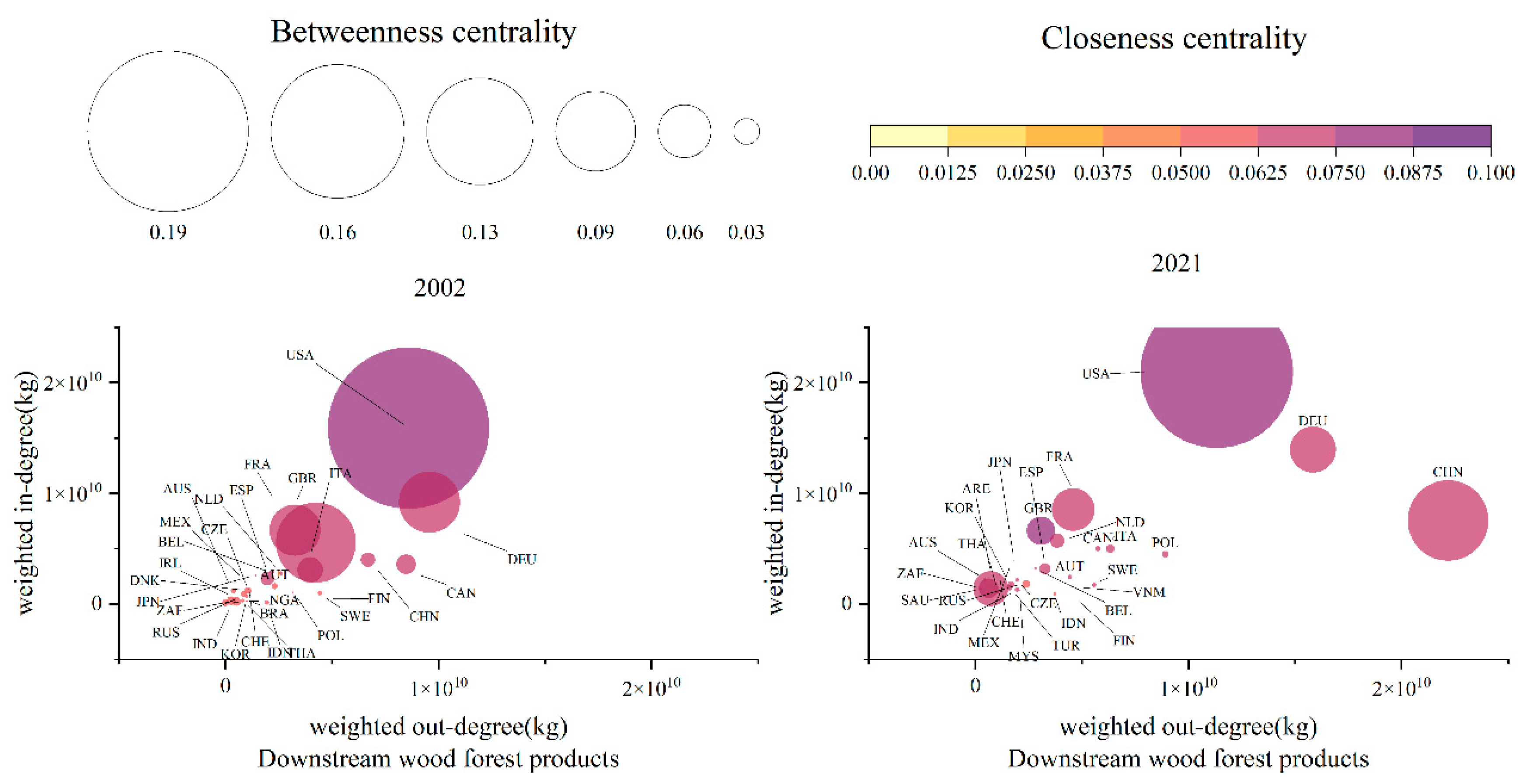
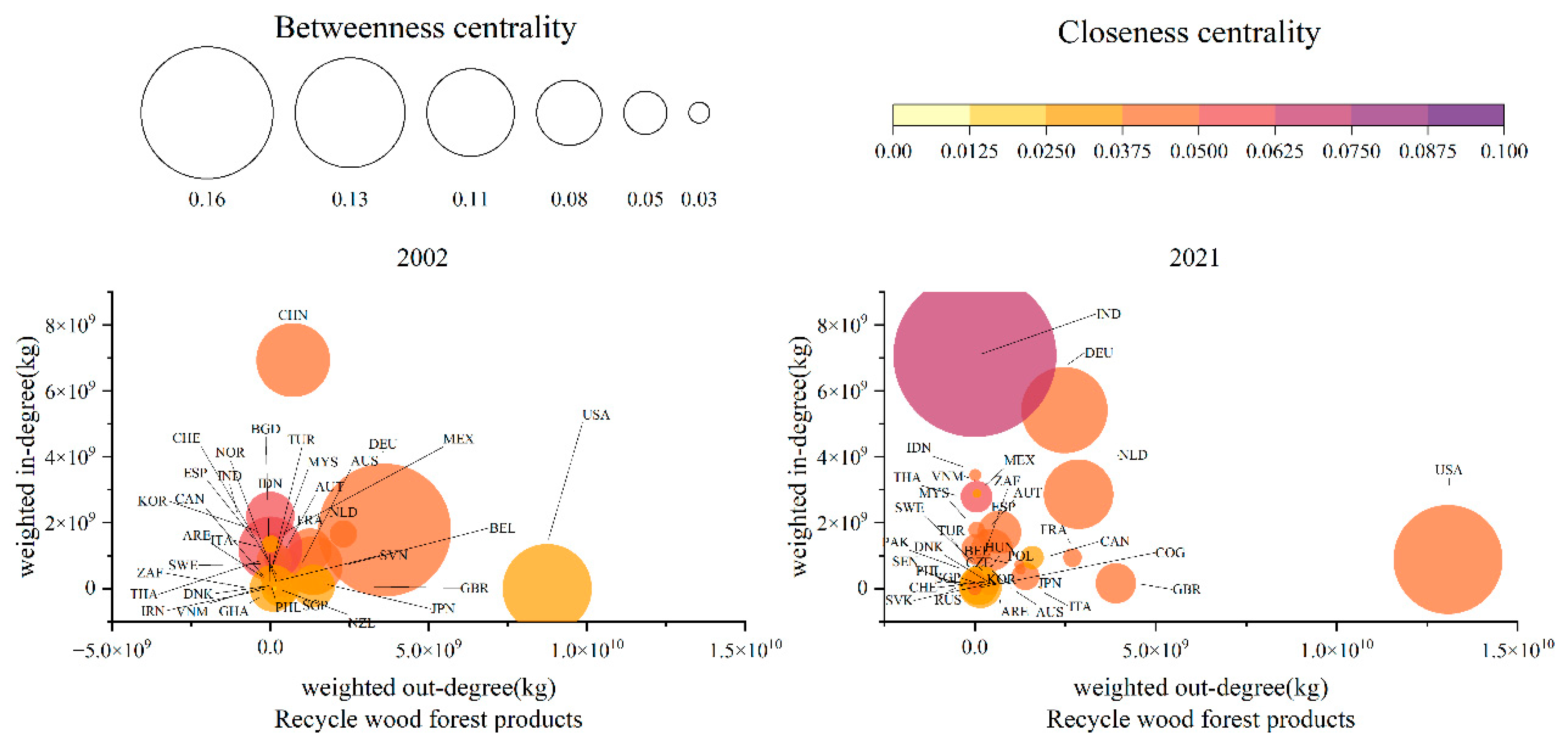
Disclaimer/Publisher’s Note: The statements, opinions and data contained in all publications are solely those of the individual author(s) and contributor(s) and not of MDPI and/or the editor(s). MDPI and/or the editor(s) disclaim responsibility for any injury to people or property resulting from any ideas, methods, instructions or products referred to in the content. |
© 2024 by the authors. Licensee MDPI, Basel, Switzerland. This article is an open access article distributed under the terms and conditions of the Creative Commons Attribution (CC BY) license (http://creativecommons.org/licenses/by/4.0/).




